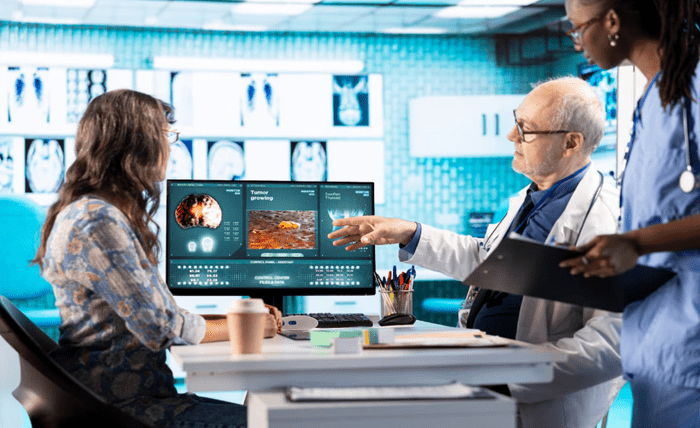In healthcare facilities, the reliability of equipment and the safety of the environment are not just operational concerns—they are matters of life and death. How can hospitals, clinics, and other healthcare institutions ensure that everything from medical devices to HVAC systems functions flawlessly? How can they prevent costly downtime while protecting patients and staff? The answer increasingly lies in implementing a Computerized Maintenance Management System (CMMS).
Improving Equipment Reliability
Hospitals and clinics depend on a wide range of medical equipment, from imaging machines and ventilators to sterilizers and surgical tools. Any malfunction can delay treatment, compromise patient safety, and result in costly repairs. For those unfamiliar with the term, what is CMMS? It stands for Computerized Maintenance Management System, a tool that provides a centralized platform for tracking and scheduling maintenance activities, ensuring that every piece of equipment receives timely attention. Preventive maintenance can be scheduled automatically, reducing the likelihood of unexpected breakdowns.
By maintaining a comprehensive maintenance history, a CMMS also allows facility managers to identify recurring issues and take corrective measures before they escalate. For example, if a particular MRI machine frequently requires repairs, maintenance teams can proactively replace worn parts or update software, improving reliability and patient care outcomes.
Streamlining Compliance and Safety
Healthcare facilities are subject to strict regulations, including those set by the Joint Commission, OSHA, and other regional authorities. Ensuring compliance with these standards is a constant challenge, especially when facilities operate around the clock. CMMS software simplifies compliance management by storing inspection records, maintenance logs, and safety certifications in one accessible system.
Automated reminders alert staff to upcoming inspections or mandatory equipment servicing, ensuring that no compliance deadlines are missed. This not only protects patients and staff but also shields the facility from fines or legal complications. For instance, regular testing of emergency generators or sterilization equipment can be logged and easily retrieved during audits, demonstrating adherence to safety protocols.
Optimizing Facility Operations
Beyond equipment maintenance, healthcare facilities face challenges in managing complex infrastructure systems, including HVAC, plumbing, lighting, and electrical networks. A CMMS allows facilities to track these assets, schedule routine inspections, and respond quickly to issues. By integrating maintenance data across departments, healthcare managers can gain a comprehensive view of facility performance, identifying bottlenecks and inefficiencies.
This visibility enables better resource allocation. Maintenance teams can prioritize high-impact tasks, allocate staff effectively, and minimize disruptions to patient care. For example, if a CMMS flags an air-handling unit for inspection before it fails, staff can plan repairs during low-traffic hours, avoiding interruptions to critical hospital operations.
Cost Control and Resource Efficiency
Healthcare organizations operate under tight budget constraints. Unplanned equipment failures can be costly, both in terms of repairs and the operational impact of downtime. CMMS helps facilities reduce these costs by promoting preventive maintenance, which is often far less expensive than reactive repairs.
The system also provides insights into inventory management, tracking spare parts, and consumables to prevent overstocking or shortages. Knowing exactly what parts are available—and when they are needed—reduces unnecessary expenditures and ensures that maintenance teams have the resources required to act promptly. This efficiency contributes directly to both patient safety and the facility’s bottom line.
Enhancing Staff Productivity
Maintenance staff in healthcare settings often juggle multiple urgent tasks, and manual record-keeping can consume valuable time. CMMS software automates scheduling, work order creation, and reporting, freeing staff to focus on high-priority tasks. Mobile access allows technicians to receive assignments, update progress, and log completed work in real-time, even while moving across large hospital campuses.
By reducing administrative burden, CMMS empowers staff to deliver faster, more reliable service, ultimately improving the overall patient experience. When equipment functions correctly, compliance is maintained, and facilities run smoothly, healthcare professionals can focus on their primary mission: providing quality care.
Conclusion
In healthcare, operational excellence is inseparable from patient safety. A CMMS provides a structured, data-driven approach to managing assets, scheduling preventive maintenance, ensuring compliance, and controlling costs. By leveraging this technology, healthcare facilities can maintain a reliable, safe, and efficient environment for patients and staff alike.
From medical devices to infrastructure systems, every asset benefits from proactive management. In an industry where even minor failures can have serious consequences, CMMS is not just a convenience—it’s an essential tool for protecting lives, optimizing operations, and enhancing the quality of care.

